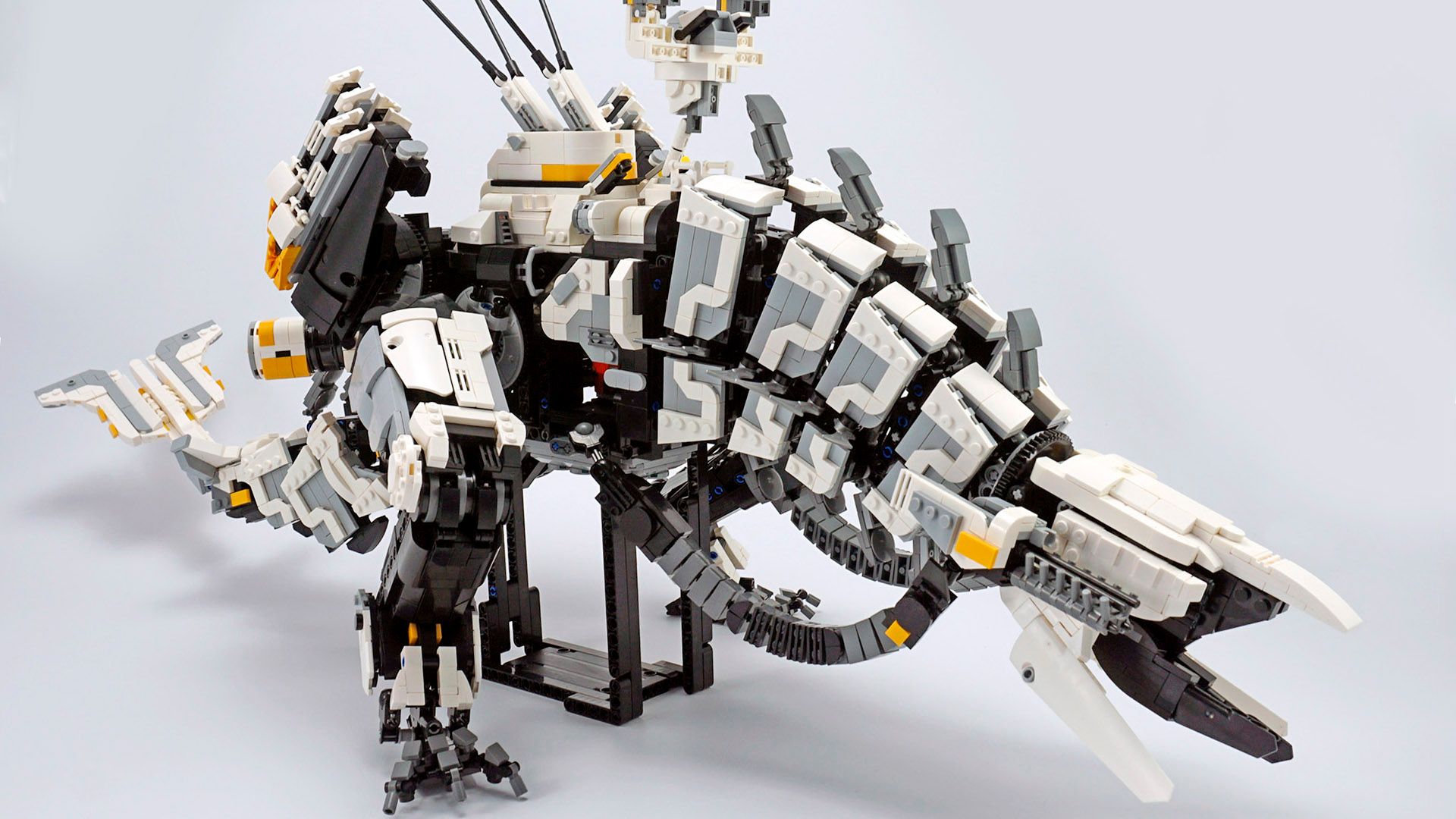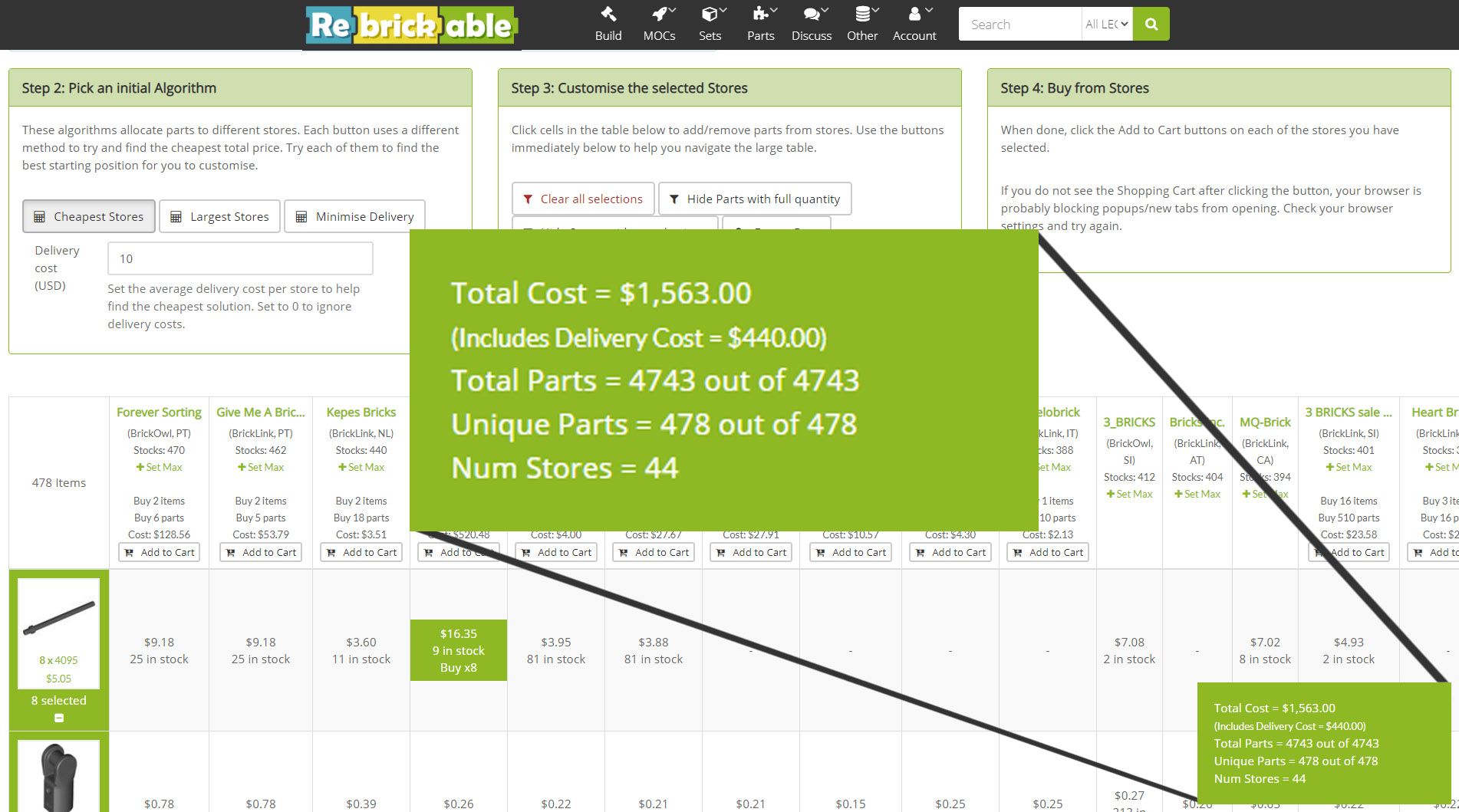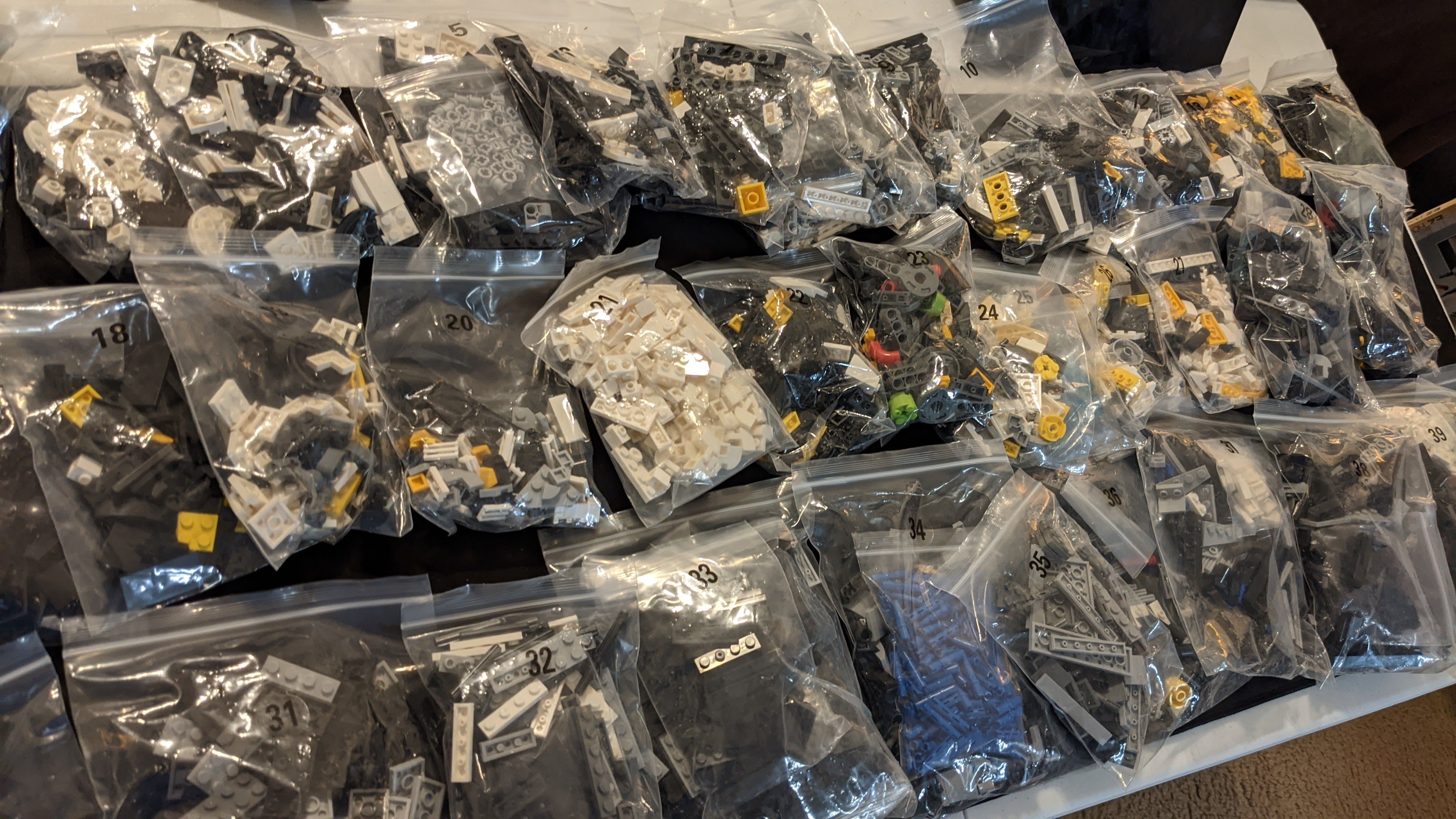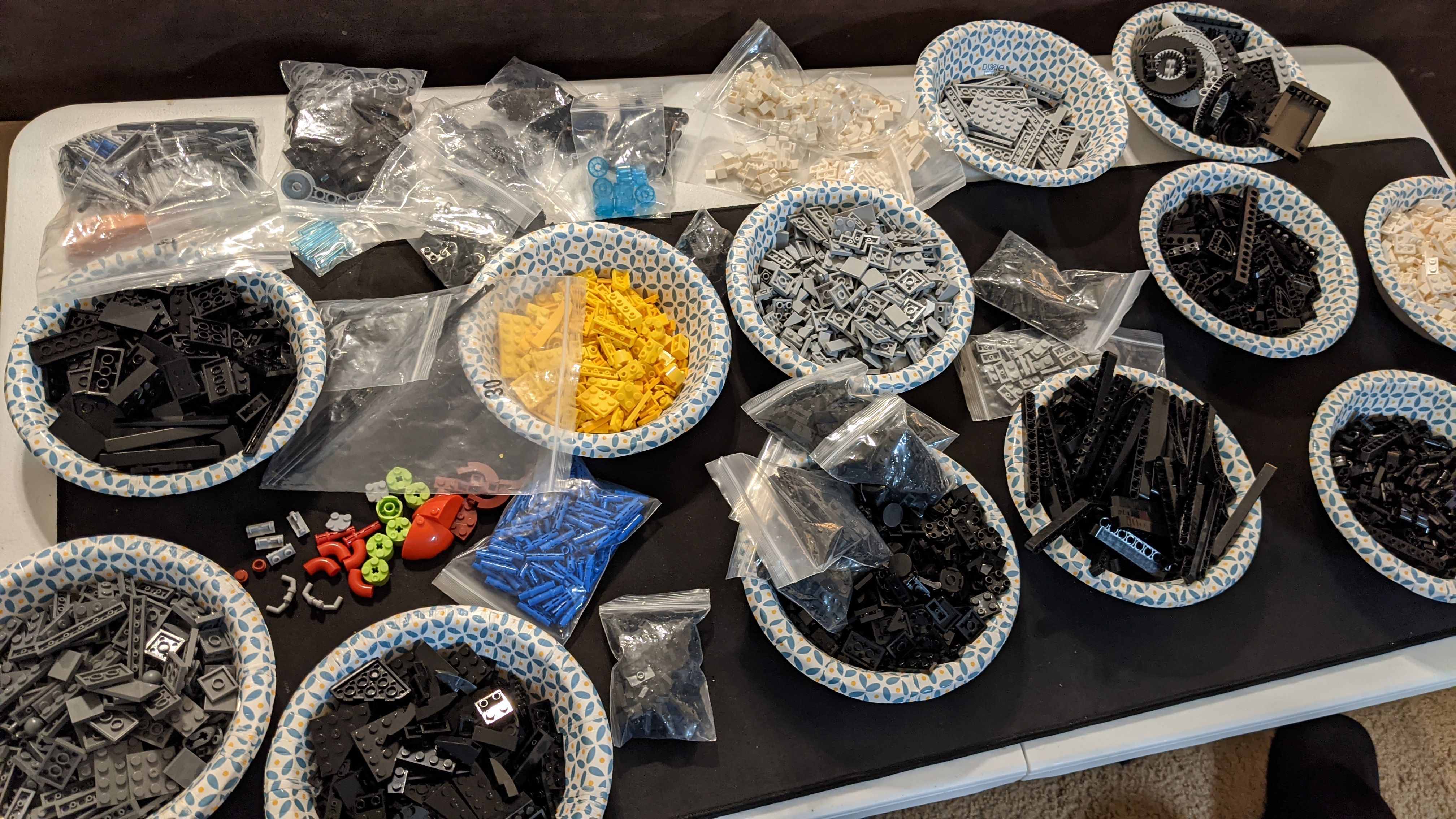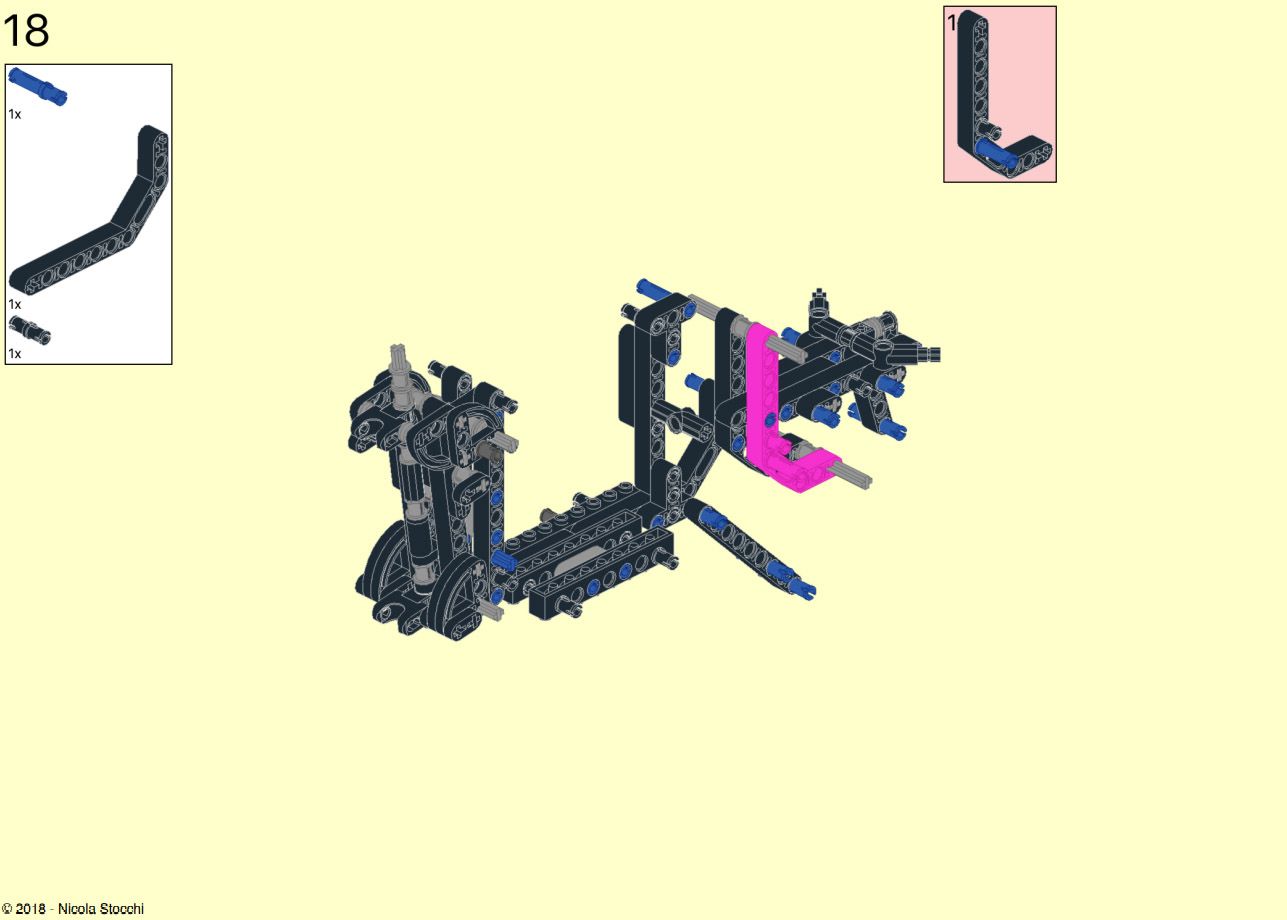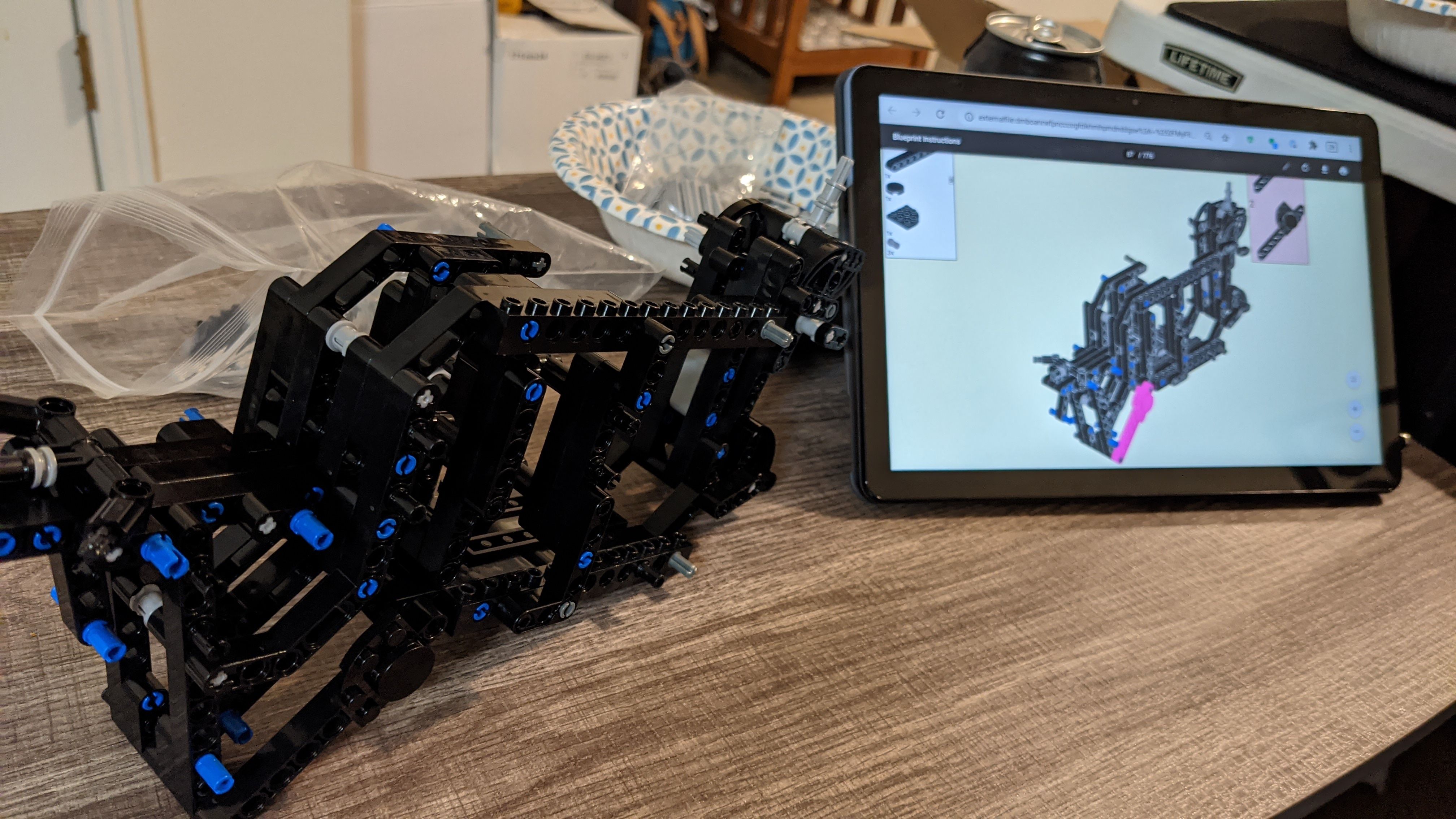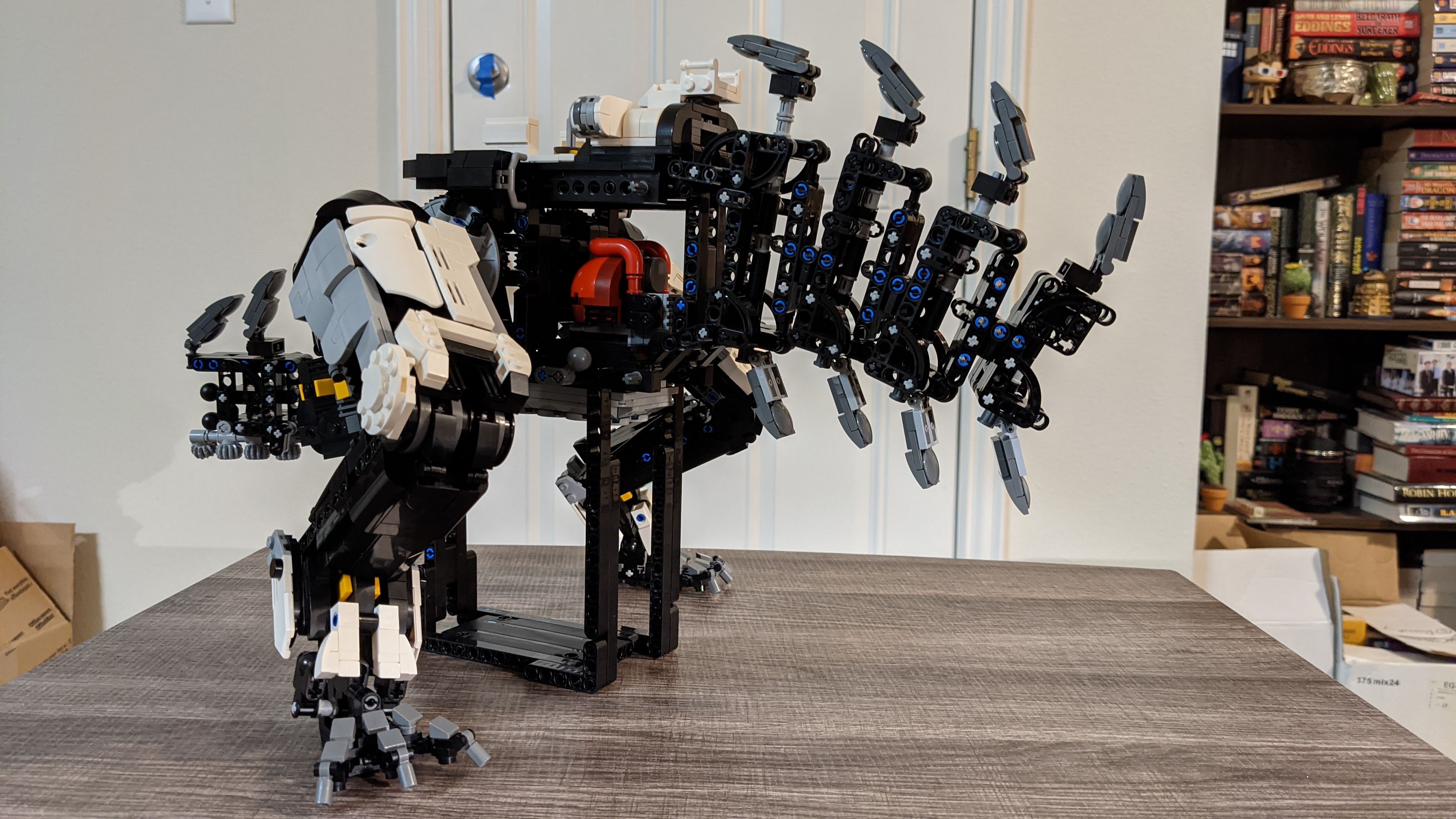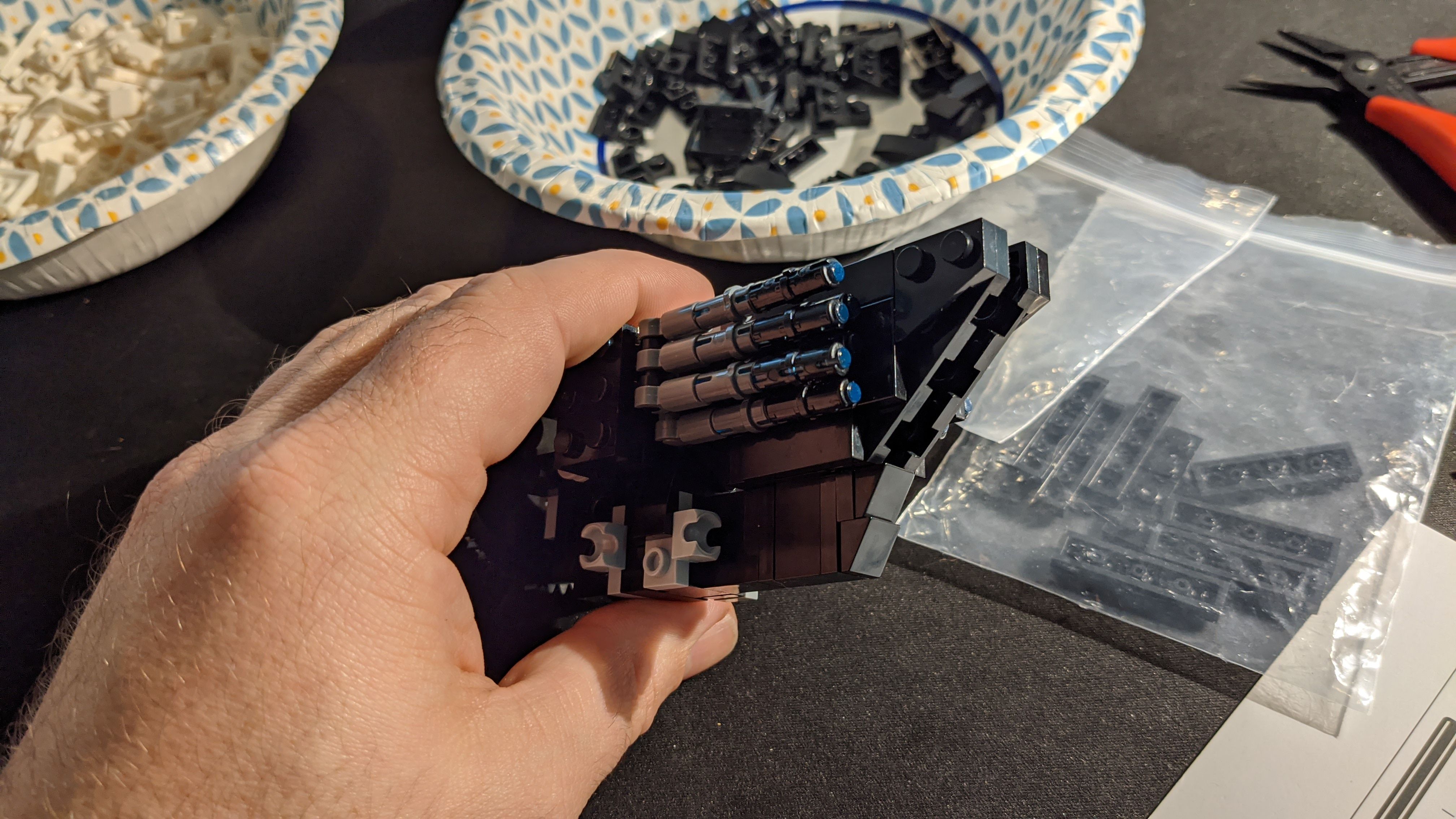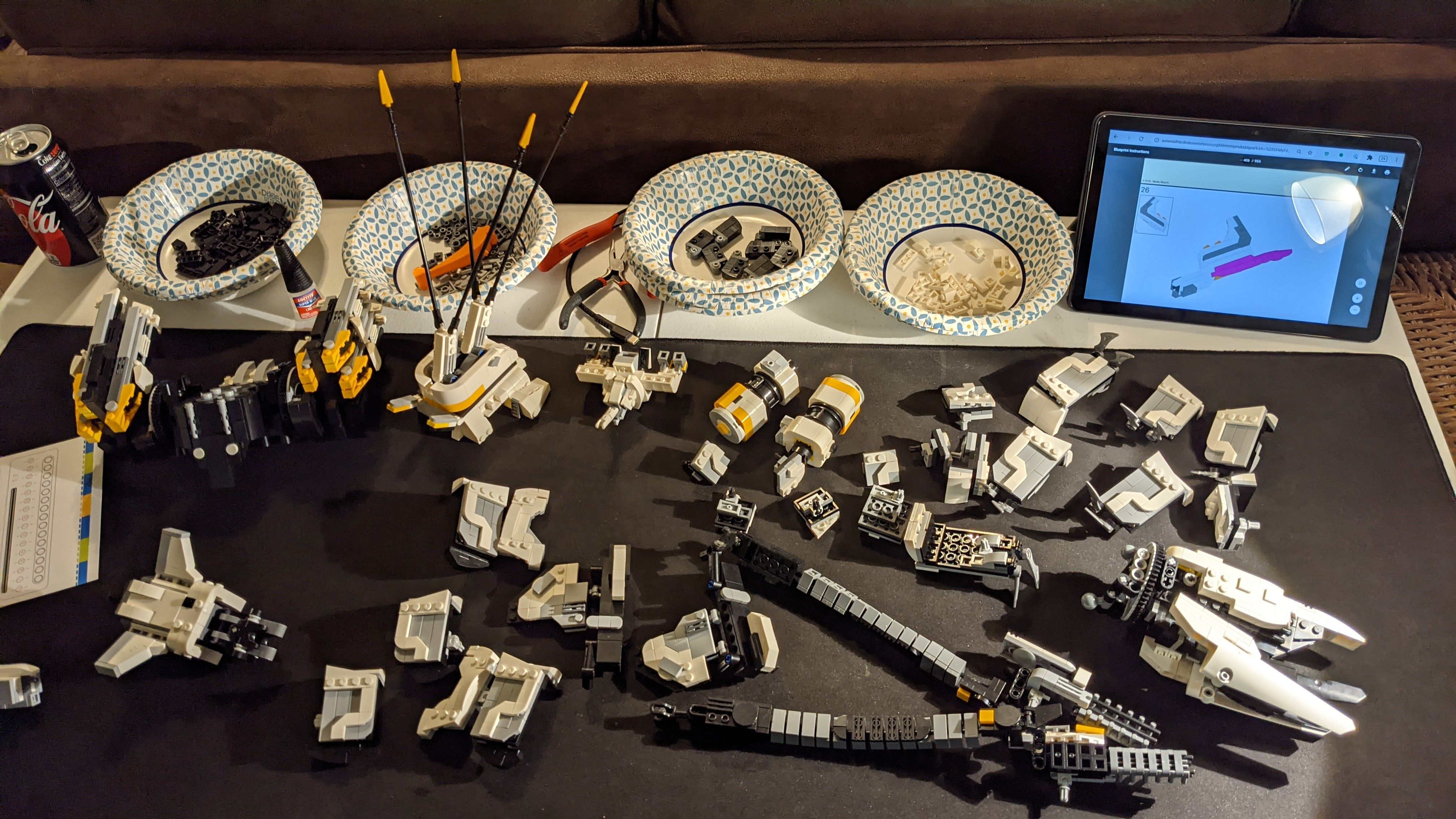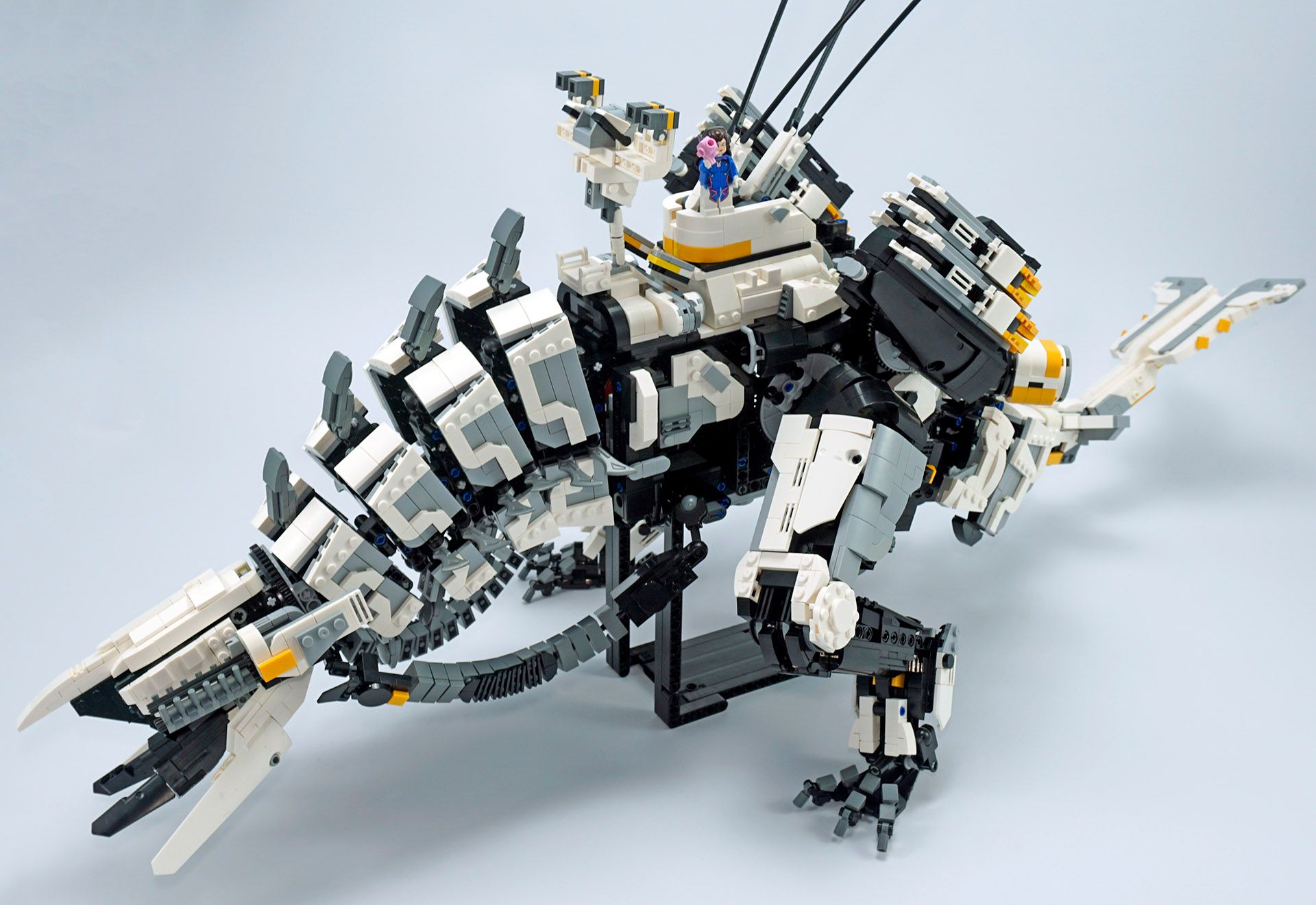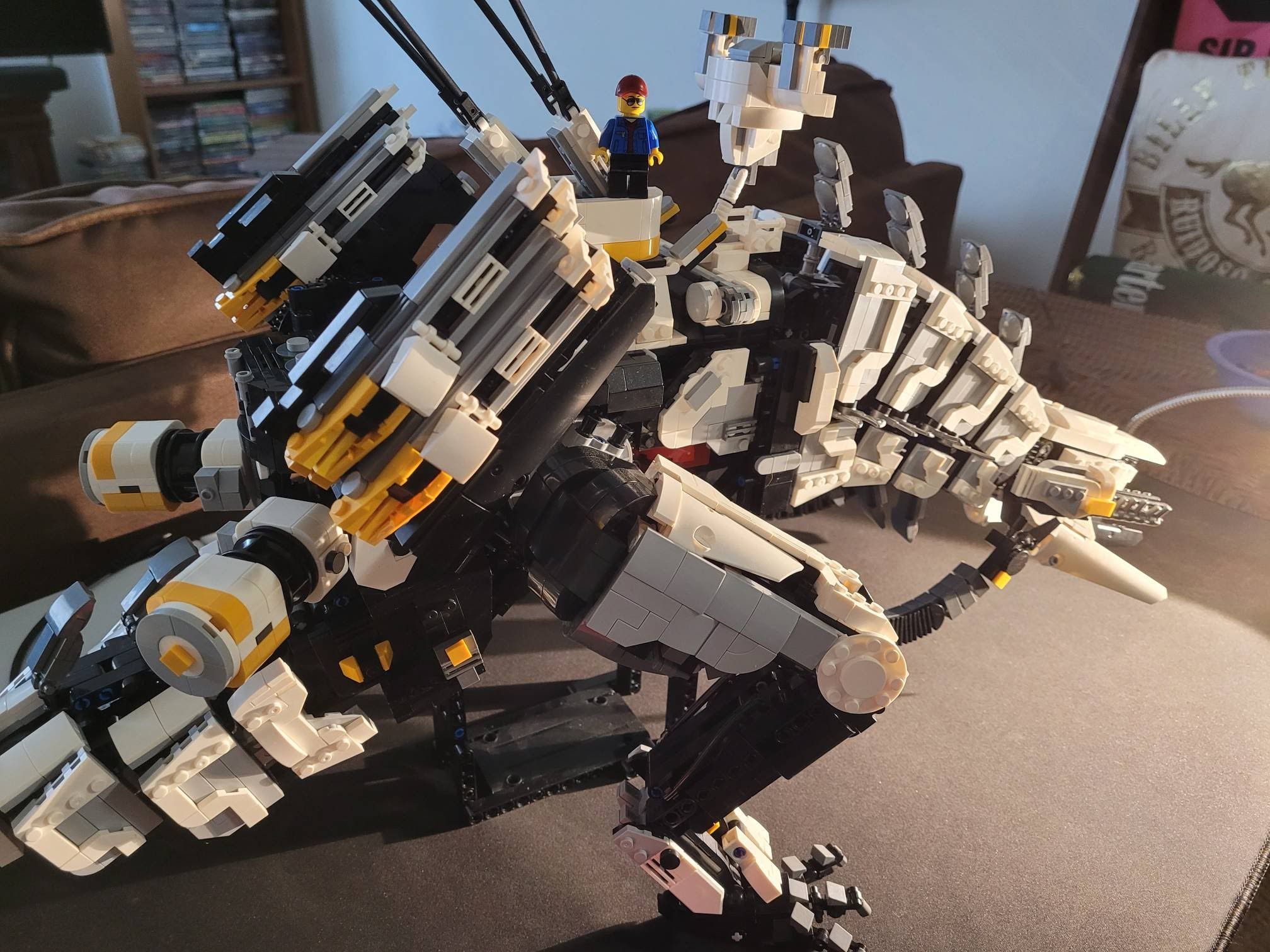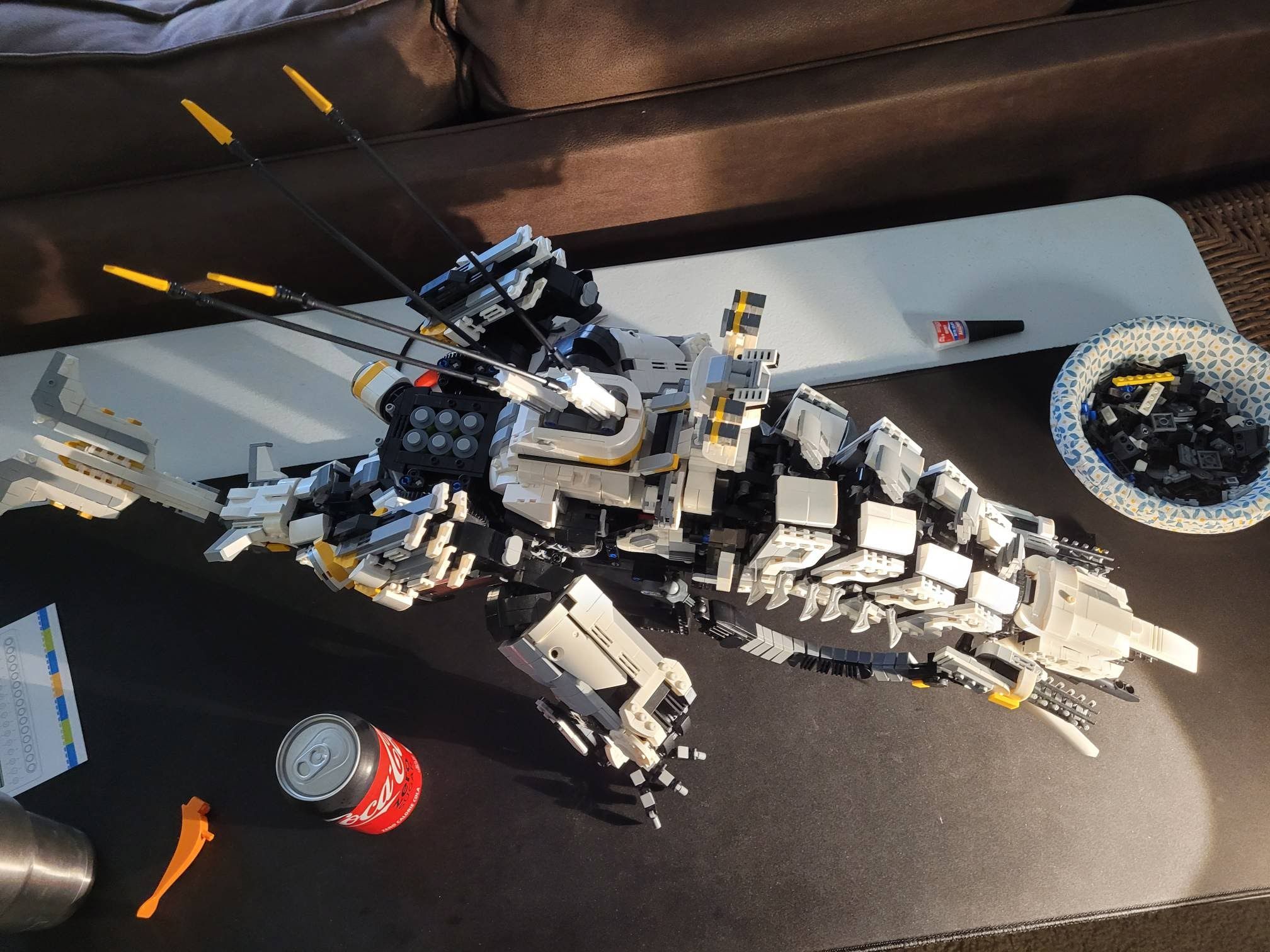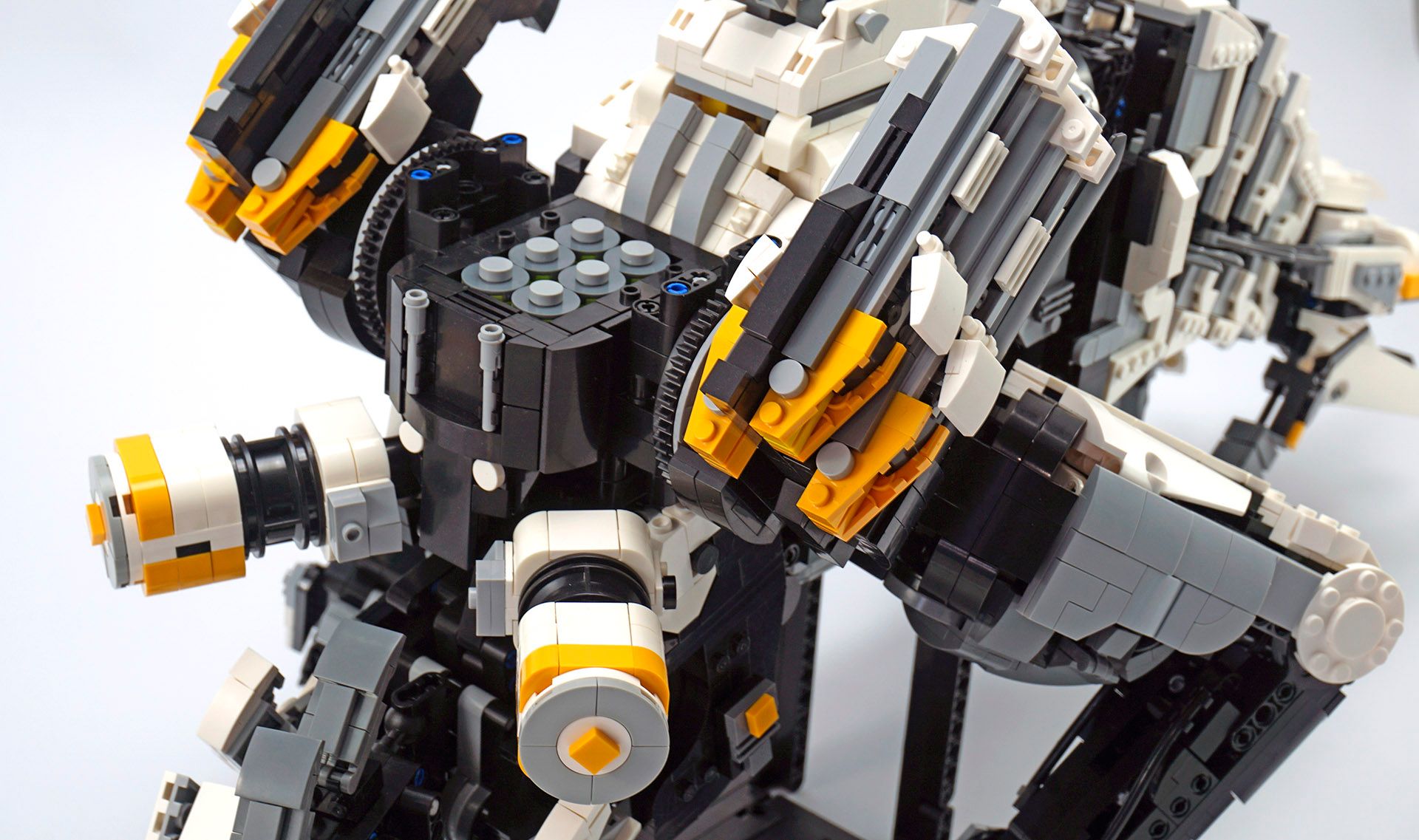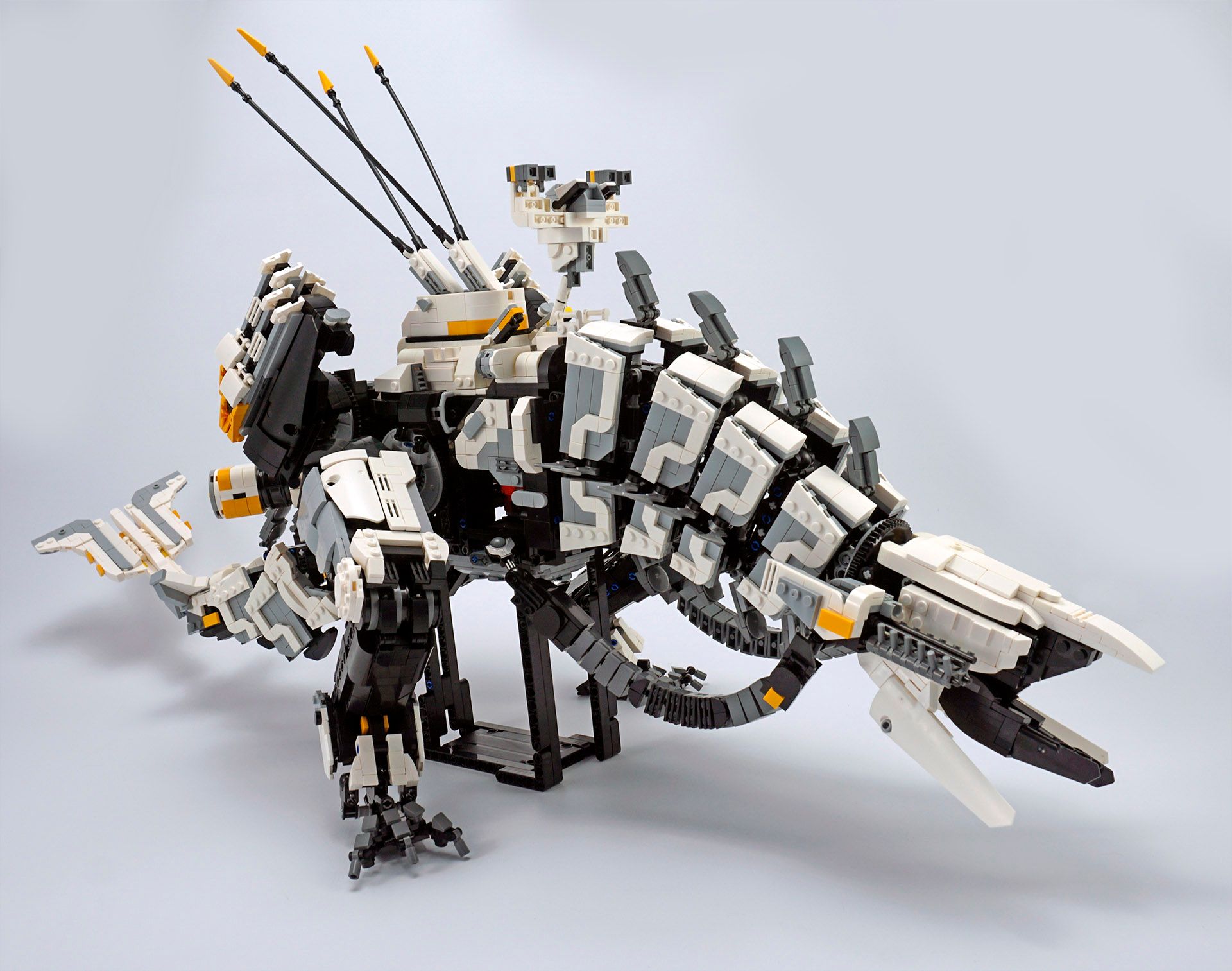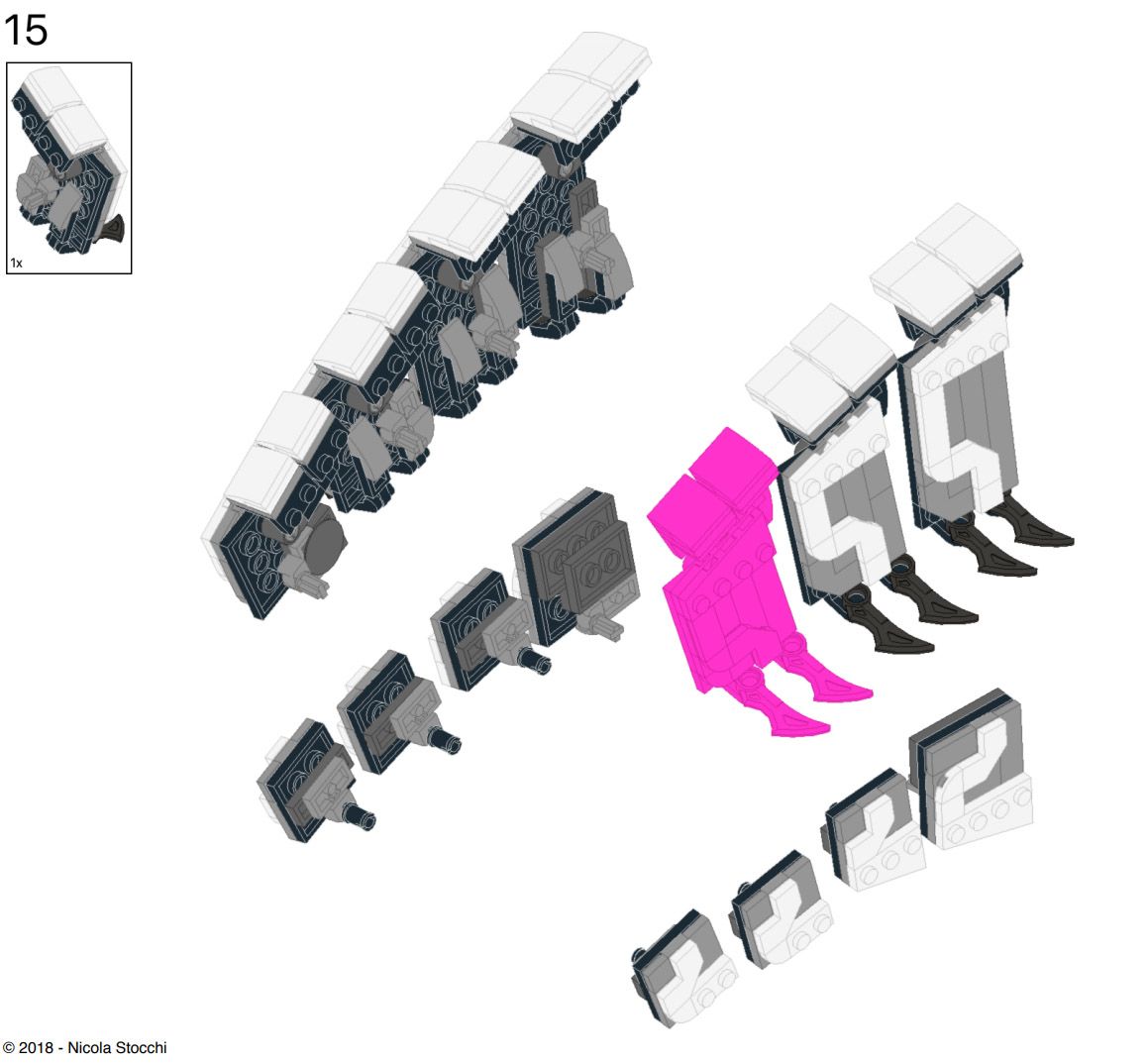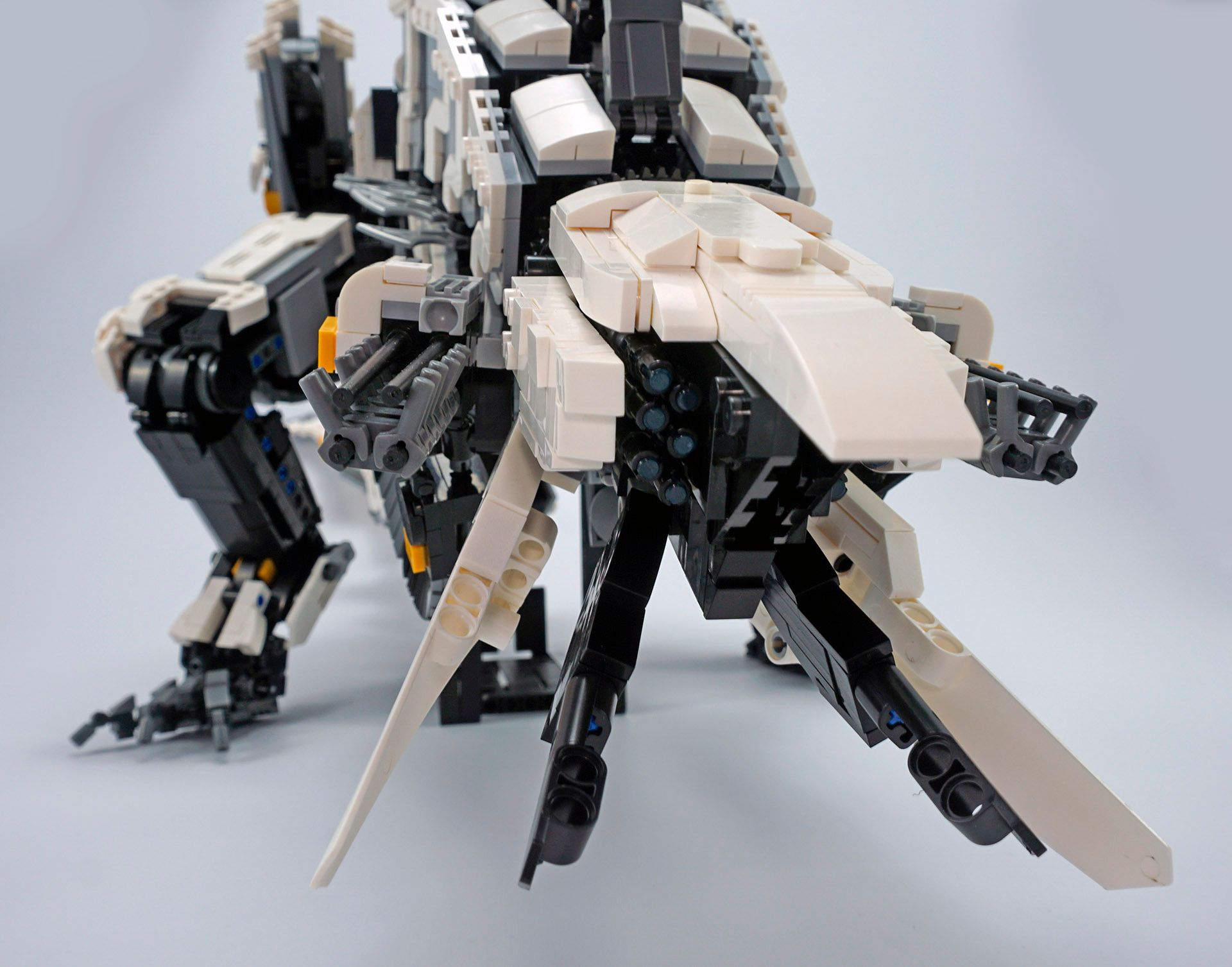Quick Links
LEGO is great. LEGO is also expensive, and though it's pretty ubiquitous in its partnerships, not every single thing you could possibly imagine is available as an official set. So if you've been obsessed with Horizon: Zero Dawn for months, and you desperately want a giant LEGO Thunderjaw (the game's iconic robot T-rex), what's a LEGO nerd to do?
Too Good to Resist
Assuming that you don't also have hundreds of thousands of loose LEGO pieces with which to design and build your own set, you have a few other options. The "My Own Creation" (MOC) community can supply you with a design and step-by-step instructions, like this massive 4743-piece LEGO Thunderjaw from designer Nicola Stocchi. Sites like Rebrickable can help you find and purchase the individual parts you need from sellers around the world.
But there's a downside: price. Official LEGO sets tend to average about ten cents per piece, more for licensed properties, a little less for the really big sets. So if that design was made as a "real" LEGO set, it would be somewhere in the range of $450-500.
But buying a massive custom project, piece by piece, can really rack up that price. According to Rebrickable, getting about 90% of those common parts from one shop would cost somewhere around $600-700. Using its multi-buy tool to get every single piece from dozens of independent shops, the cost comes out to a soul-crushing $1,123, plus a whopping $440 for shipping. Suddenly that massive, beautiful robot costs more than 30 cents a piece!
LEGO can get expensive, but even the most ardent collector might balk at those prices. And I did. And then I cheated.
While searching for some Horizon: Zero Dawn memorabilia on an auction site, I spotted the Thunderjaw design I'd been drooling over for more than a year... sold not as a set of instructions, but as a full building set with pieces, delivered to my door like a conventional LEGO set. What was even more amazing was that it was selling for $152 with free shipping---less than many real LEGO sets, and an absolute steal considering that its nearly 5,000 pieces worked out to only about two cents a piece!
Once I paid for the set, I noticed that the listing very carefully omitted the word "LEGO," and that it was shipping from China. The penny dropped: This was a seller who had taken the parts list from Nicola Stocchi's design, populated it with knock-off LEGO pieces (which are entirely legal, if nowhere near as good as the real thing), and created an ad-hoc LEGO set of one of the most drool-worthy designs I'd ever seen.
If I was willing to work with substandard pieces, I could get the set all at once, for literal pennies on the dollar, and have a new stunning centerpiece to my collection. What's more, I'd be able to build a creature design from one of my favorite video games (that LEGO will probably never license for itself), created by someone with far more talent than I. Even waiting for international shipping, it would come in much faster than waiting on parts from 44 different stores.
What Have I Done?
DHL said it would be up to six weeks before I'd get my pieces. I got them in just two, which is pretty great for shipping from China to Texas. I opened the unmarked box, and I was pleased to see it filled with dozens and dozens of numbered ziplock bags filled with unmarked pieces. It was just like a "real" LEGO set, minus the branding!
Inside were two cards: one with a download link for the PDF of the instructions (since an actual instruction booklet would have cost nearly as much to print as the pieces themselves), and a handy "ruler" scale for the trickier bar and Technic pieces. The download card also informed me, to my immediate dismay, that the numbered baggies didn't actually correspond to the order of the building instructions the way a real LEGO set does.
That meant that I had nearly 5,000 loose pieces of not-LEGO. And in order to assemble this almost literal monster, I'd have to search through it all, step by step, piece by piece.
For a little context: The biggest and most complex set I'd ever assembled before was the Avengers Helicarrier (set number 76042), a massive undertaking at just under 3,000 pieces. But the Helicarrier is basically a big boat with a few gears added on. It took me about 16 hours. The Thunderjaw has 60% more pieces, and it's a bipedal, almost "organic" design, similar in physical dimensions but much more complex and detailed.
Even at this early stage, I could tell this was going to take a massive amount of time.
I started by separating the pieces by color into individual bowls ... then into multiple bowls because the paper bowls I'd bought weren't big enough. A little way into emptying the bags I spotted an error in my methodology and left the bags that had dozens of smaller identical pieces alone, the easier to find them later. It took me a solid two or three hours just to get all the pieces spread out on a 4'x2' table ... and the dozens of bowls and bags spilled over into another 2'x2' table.
Doing Right by the Designer
Finally, I was able to start. I loaded up the PDF instructions file on my Lenovo Chromebook Duet, an extremely handy companion for this build. But when I did, I noticed that the file lacked any mention of designer Nicola Stocchi. I had to assume that the unscrupulous seller had stolen the design and was redistributing the instructions as an illegal download.
To give credit (and money) where it was due, I purchased Stocchi's instructions from Brick Vault, where I knew he would get a royalty for his hard work on the initial design and the instructions themselves. The legitimate PDF file (which was a bit better organized, and had his copyright on every page) cost me $40.
That brought my final, total cost for the Thunderjaw to $204.52, with an average piece price of a little more than two cents.
The Build
As I said earlier, the Avengers Helicarrier set took me approximately 16 hours from start to finish. For the Thunderjaw, I stopped counting at 20 ... when I was about a third of the way done.
Finding the necessary pieces, with almost five thousand of them laid out before me, was definitely the biggest time sink. Eventually, I had to start subdividing my color-coded bowls even further, because finding the right tiny variation on a 2x1 black Technic piece among 300 others could take me 15 minutes or more. I developed techniques of sifting through the pieces, from one bowl to the other, almost like an old-fashioned gold panner.
I cannot overstate the frustration that this process gave me, especially in the few times a colored piece wasn't in the bowl I was expecting. I got to the point that I was setting aside particularly hard-to-find pieces on their own.
The instructions didn't help with the speed. Reading the 3D-rendered and presumably machine-assisted instructions---over 1,700 individual steps/pages!---made me appreciate the care and design that goes into LEGO's professional booklets. At some points steps would consist of just one tiny stud or joint added, while others would be a large step that might take 5 or 10 minutes just in assembly. And there's none of the handy "x4, do this four times" a veteran LEGO builder might be used to.
The build was both more complex and more precarious than a typical LEGO build because the Thunderjaw is pretty spry as a creature design. The massive robot of the game doesn't have to adhere to actual physics, but to make it stand up on its own two feet in LEGO form, the designer had to incorporate a Technic weight-bearing frame under the belly. The "skeleton" of the Thunderjaw is incredibly complex and a little flimsy, acting as a frame for its bow-shaped body and tons of add-on armor pieces.
There are a lot of unconventional interesting decisions in the main build. The blue machine "eyes" of the Thunderjaw are Star Wars lightsaber blades in long plastic piping, and a few details are done out in bat wings and motorcycle handles. There's an amazing amount of engineering and creativity on display here.
Stochi's instructions were to build the main skeleton and body first, complete with the legs. It then has you build about half a dozen large add-on pieces, separate and without attachment---the head, two tail sections, the "disc launchers" on its haunches, the radar array, the long, spiny antennas, the two rear cylinders, and the machine guns and "ammo belts" attached to the head. On top of that, there are another two dozen decorative armor "plates" that finally finish it off.
Putting this together took about three weeks, putting in hours after work and on the weekends. I'm not going to pretend that I didn't have fun---I wouldn't have spent that much dough if I wasn't reasonably sure of a good time, and it's not as if my social calendar is packed during COVID. But it's easily the most difficult, frustrating experience I've ever had with LEGO (or indeed, "LEGO").
The Result
I'm going to need a bigger shelf.
Setting aside the headache of actually building this thing, the end result is glorious. It's 32 inches long and 15 inches high (not counting those narrow antennas), and wonderfully detailed: Fans of the game will be able to spot almost all of the pieces they're used to shooting off with Aloy's arrows and gadgets.
This even extends to the interior sections of the design: In the middle of that hulking beast is a mechanical "heart," which you can pull out and examine (if you're careful and patient). The scale of this thing is even approximately correct to LEGO minifigs ... though if anyone's selling a customized Horizon: Zero Dawn Aloy minifig, I haven't been able to find one.
This set is impressive not just because of the scale or because of the remarkable design and engineering that went into it, but because LEGO is a great medium for this model in particular. LEGO makes some great robots in the official sets, like Voltron, the Hulkbuster, or even the more "kiddie" designs in smaller sets. (LEGO even has an "official" Jurassic World robot T-rex!) Combine some loving custom work with the wonderful creative design that went into Horizon, and you have something truly special.
The Thunderjaw isn't my favorite LEGO ("LEGO") set ever---that honor still goes to the 007 Aston Martin. But it's definitely the most impressive piece I've ever personally worked on. I just dread having to move the damn thing ever again.
The Difference
I've already mentioned what a headache it was to sift through 5,000 pieces all at once, and how it wasn't helped by instructions that were poorly executed compared to an authentic LEGO build. Eventually, I developed even more techniques, like mirror-building the symmetrical armor sections, to save myself some time. But there are other factors that come into play that make a large MOC design more difficult.
First of all, the Thunderjaw is incredibly fragile, even compared to the most complex LEGO designs. It's definitely a display piece model, not a toy. Despite a few pieces like the neck, tail, and disc launchers being posable, if you move stuff around without the utmost care, it comes apart. The ball joint of the tail is almost constantly loose. This is especially true of the decorative armor pieces, which are attached by just one stud or bar each.
Part of this is because MOC designers aren't held to the same standard of engineering as LEGO designers---they can make things a little more precarious, knowing that adult builders don't need their hands held as much as children. I've made a few smaller MOCs and built my own, so I was prepared for that. But part of it, I'm sure, is that I was using knock-off LEGO pieces, which aren't created with the same exacting manufacturing tolerances as authentic ones.
On a small build, this isn't really a big deal. On a build of this size and complexity, the problems of loose and/or tight pieces start multiplying. At several points (especially on the armor pieces) I had to redesign some of the model on the fly, making it more rigid and less flexible to accommodate those substandard pieces. There was only one error in the instructions themselves (page 247 and 258, a one-stud spacing issue) for which I was able to adjust.
On a couple of occasions, I had to use pliers to get pieces apart from one another. The long plastic tubes that hold the "machine gun ammo" together stripped themselves as I slid the pieces down them. I had to use the Kragle (super glue) at two points on the radar dish to make sure it could support its own weight. Yeah, there are compromises.
Also, the set was missing about a dozen pieces. Which I was expecting, to be honest, after compromising to save myself hundreds of dollars on this build. I was able to redesign around them, with a little bit of substitution from my own loose LEGO collection. (There are about six authentic LEGO pieces in there somewhere.) What's odd is that I had about 100 leftover pieces, much much more than the typical "spillover" in a standard LEGO set.
Some of the pieces were clearly used, too ... including some of the big decorative pieces on the outside. One of the Thunderjaw's big white mandibles had very visible scratches on it right out of the bag. Again, it's an acceptable compromise considering how much money I saved, and those imperfections aren't any more visible from a foot or two away than the missing LEGO logos on the individual studs.
Was It Worth It?
The finished product speaks for itself. Even with a few less-flattering alterations to the armor pieces, the Thunderjaw is the biggest and most impressive piece in my LEGO (or "LEGO") collection, by far. I don't regret the time and effort I put into it, and I think the money I saved is an acceptable trade-off for the end result.
That said, while I accepted the drop in piece quality and the extra time it took to sift through all those loose pieces, I really didn't appreciate the seller straight-up stealing Nicola Stocchi's work. Even though I've paid him myself, I won't be buying a set like this again if I have any feeling that it's a similar situation.
And yeah, the time. The time. I'm still going to buy LEGOs and thoroughly enjoy them, but the extra time it took to find pieces and work around the less-than-professional instructions means I'm not in a hurry to build any similarly scaled MOCs any time soon, with or without authentic LEGO pieces.
If you want to see what's possible with aftermarket LEGO designs, do a search for MOC instructions and check them out for yourself. You can see how much a design would cost in terms of parts before buying it from sites like Rebrickable and Brick Vault. My advice: Start with something much, much smaller.

